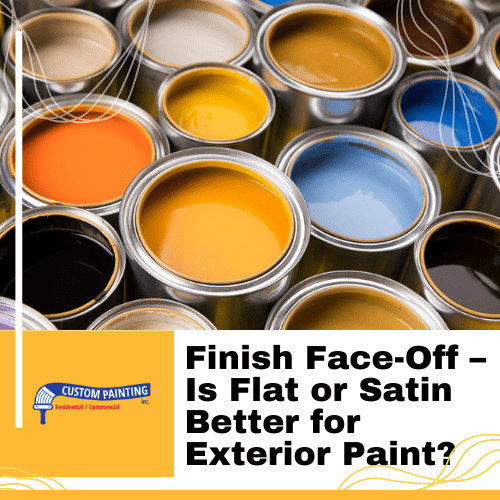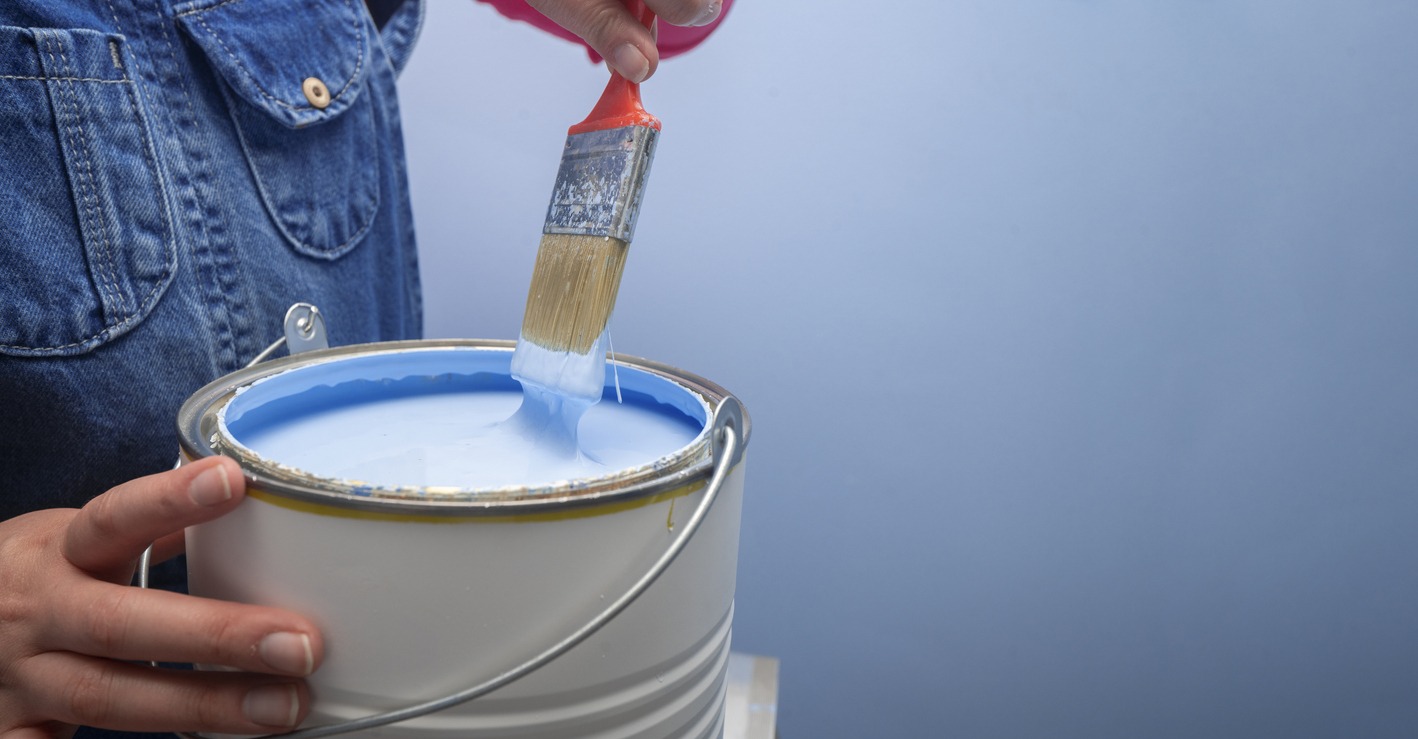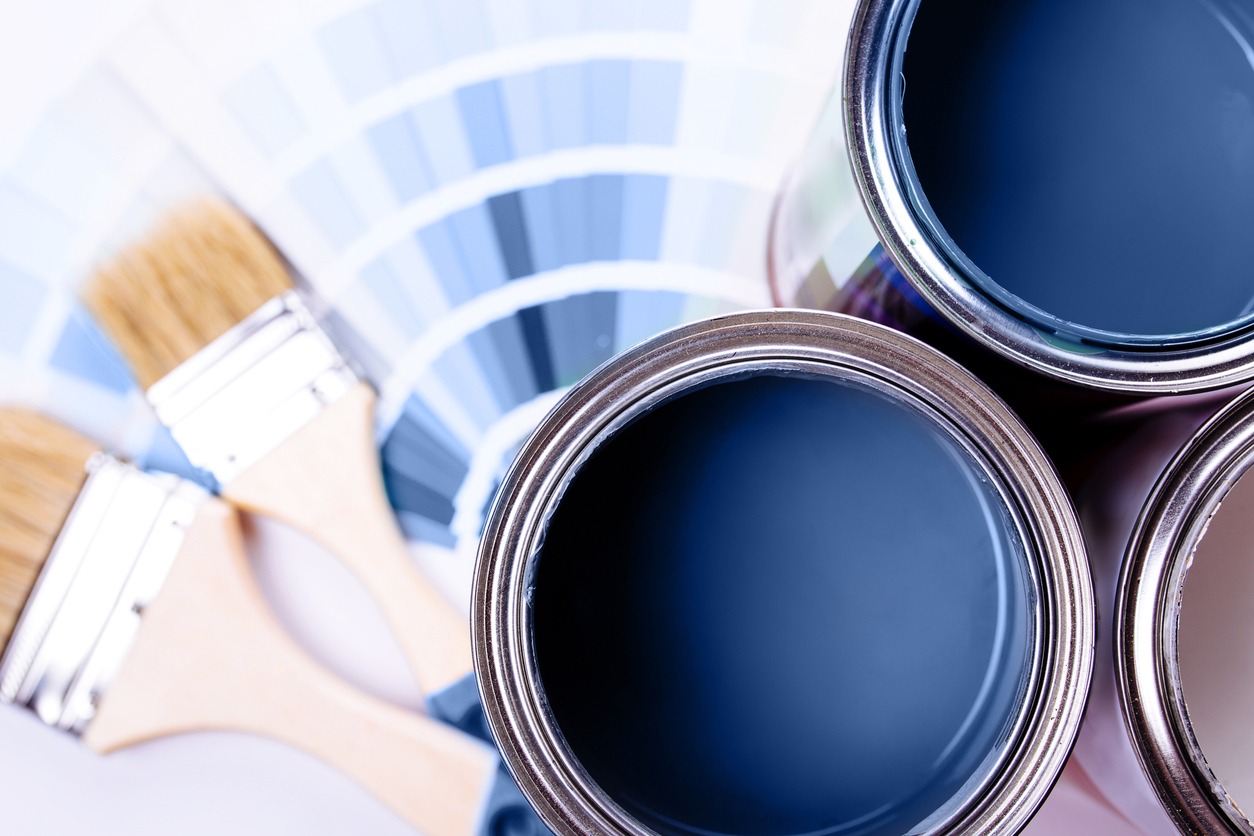When it comes to painting a home’s exterior, the final appearance isn’t just about color; the finish plays a pivotal role in both the aesthetic appeal and longevity of the paint job. The debate between using flat or satin finishes is crucial, with each offering distinct advantages and drawbacks. This article delves into the nuances of these finishes, aiming to guide homeowners toward the best choice for durability, aesthetics, and maintenance.
Understanding Paint Finishes
Paint finishes can dramatically alter the visual effect and durability of exterior surfaces. They range from matte to high-gloss, each with specific characteristics. Flat and satin finishes sit on different points of this spectrum. A flat finish offers a matte appearance with minimal sheen, absorbing light rather than reflecting it. On the other hand, Satin has a slight gloss, offering a velvety sheen that subtly catches the light. The choice between these finishes impacts not only the look of your home but also its resistance to weather and wear.
Flat Finish: Pros and Cons
A flat finish is often praised for its elegant, non-reflective surface that hides surface imperfections well. It’s ideal for older homes with surface irregularities or large, flat surfaces prone to blemishes. However, its porous nature makes it more susceptible to staining and allows dirt and moisture to penetrate more easily, posing challenges in maintenance and cleaning.
Pros:
- Elegant Appearance: A flat finish offers a sophisticated, non-reflective surface that can enhance a home’s exterior with a smooth, matte look.
- Hides Imperfections: A flat finish can mask surface irregularities better than glossier finishes for older homes or surfaces with blemishes.
- Uniform Coverage: Flat paint provides a more uniform coverage without needing multiple coats, making it a practical choice for large areas.
Cons:
- Maintenance Challenges: The porous nature of flat finishes means they’re more prone to staining and can absorb dirt and moisture, requiring more frequent cleaning or touch-ups.
- Difficult to Clean: Flat paint doesn’t wipe clean easily, unlike glossier finishes. Marks and stains may require repainting rather than simple washing.
- Less Durable: Flat finishes are generally less resistant to wear and tear compared to their glossier counterparts, making them a less durable option for high-traffic areas.
Satin Finish: Pros and Cons
Satin finishes are favored for their versatility and durability. Their mild gloss is more moisture-resistant and easier to clean, making them a practical choice for exteriors exposed to harsh weather or areas that require frequent washing. However, the reflective quality of satin can highlight imperfections on walls and is generally more expensive than flat finishes, which might affect budget-conscious decisions.
Pros:
- Durability: Satin finishes offer a higher moisture resistance than matte finishes, making them more durable and suitable for varying weather conditions.
- Ease of Cleaning: The slight gloss in satin finishes allows for easier cleaning, making them ideal for exteriors that require regular maintenance.
- Visual Appeal: The mild gloss of satin paint provides a velvety sheen that can enhance a home’s exterior, offering a balance between matte and high-gloss finishes.
Cons:
- Highlights Imperfections: The reflective nature of satin can emphasize surface flaws, requiring more prep work to achieve a smooth appearance.
- Cost: Generally, satin finishes are more expensive than flat finishes, which could be a deciding factor for those on a tight budget.
- Application Challenges: Achieving an even finish with satin paint can be more challenging, as it tends to show lap marks and brush strokes more than flatter finishes.
Factors to Consider When Choosing a Finish
Here are some of the important factors you need to consider when choosing a finish:
- Climate and Environmental Exposure: The local environment plays a significant role in selecting the right finish. High-humidity areas benefit from the moisture resistance of satin, while dry, temperate climates could make the most of flat finishes’ aesthetic qualities.
- Architectural Style and Aesthetics: The architectural design of your home can influence your finish choice. Historical or traditional homes look better with a flat finish’s soft, matte appearance, while modern architecture calls for crisp edges and a slight sheen of satin.
- Surface Imperfections and Prep Work: Evaluate the condition of your exterior surfaces. Extensive prep work and a smooth base are crucial for satin finishes to prevent highlighting flaws. Flat finishes might be more forgiving but require careful application to avoid patchiness.
- Longevity and Maintenance Expectations: Consider how often you’re willing to repaint or clean the exterior of your home. Satin finishes offer greater longevity and easier maintenance, while flat finishes may need more frequent touch-ups.
Application Tips for Both Finishes
Achieving a long-lasting and visually appealing exterior paint job goes beyond choosing the right finish. The application process itself plays a critical role in the final outcome. Here are some expanded tips for applying both flat and satin finishes to ensure the best results:
- Preparation is Key: Thoroughly clean the exterior surface to remove dirt, grime, and peeling paint. Repair any cracks, holes, or imperfections in the surface. Sand smooth surfaces lightly to improve paint adhesion.
- Choose the Right Tools: Invest in high-quality brushes and rollers specifically designed for exterior paint. Synthetic brushes work well for water-based paints, while natural bristles are better for oil-based options. Consider using a sprayer for large, unobstructed areas, but be mindful of overspray and weather conditions.
- Priming: Apply a quality exterior primer to ensure even coverage and paint adhesion. This is especially important for surfaces that have never been painted or have undergone extensive repairs. For best results, use a primer recommended by the paint manufacturer that is compatible with your finish type.
- Mind the Weather: Avoid painting in extreme temperatures. Ideal painting conditions are typically between 50°F and 85°F with low humidity. Ensure there’s no rain forecasted for at least 24 hours after painting to allow the paint to dry properly.
- Application Technique: Apply paint in thin, even coats, allowing sufficient drying time between coats as specified by the paint manufacturer. Paint with smooth, long strokes to avoid brush marks when using a brush. Use a W-pattern with rollers for even coverage and avoid roller marks. For satin finishes, maintain a wet edge to prevent lap marks, as satin’s slight gloss can make these more noticeable.
- Edge and Detail Work: Use painter’s tape to protect edges and create clean lines around windows, doors, and trim. Tackle edges, corners, and details with a smaller brush for precision and control.
- Safety and Clean-up: Wear appropriate protective gear, such as gloves, masks, and eye protection, especially when sanding or spraying paint. Clean tools immediately after use with the proper solvent for oil-based paints or water for latex-based paints.
Conclusion
Whether you prefer the sophisticated matte appearance of a flat finish or the durable and easy-to-clean benefits of a satin finish, the right choice depends on your specific needs, aesthetic preferences, and environmental conditions. Remember, a beautiful and lasting exterior paint job begins with selecting the right finish. For professional advice and top-notch painting services in the Bay Area, don’t hesitate to contact Custom Painting, Inc. at 925-294-8062 or use our online contact form to get started on transforming your home’s exterior today.



